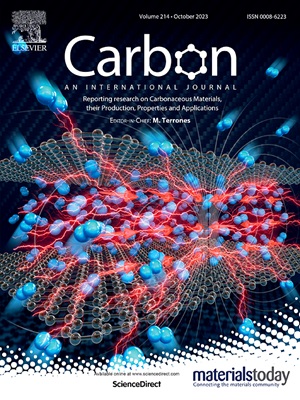The Mitsunobu reaction for the gentle covalent attachment of biomolecules to graphene oxide
IF 10.5
2区 材料科学
Q1 CHEMISTRY, PHYSICAL
引用次数: 0
Abstract
Graphene oxide (GO) has emerged as a promising biomaterial as it is easily and cheaply synthesized, strong, cytocompatible, osteoinductive, and has a well-characterized aqueous degradation pathway. It is also a great substrate for functionalization with biomolecules such as proteins, peptides, and small molecules that can enhance or add bioactivity. Covalent chemical linkages as opposed to typical noncovalent association methods are preferable so that the biomolecules do not quickly diffuse away or face replacement by other proteins, which is critical in long time scale applications like bone regeneration. However, covalent chemistry tends to carry a drawback of harsh reaction conditions that can damage the structure, conformation, and therefore function of a delicate biomolecule like a protein. Here, the Mitsunobu reaction is introduced as a novel method of covalently attaching proteins to graphene oxide. It features gentle reaction conditions and has the added benefit of utilizing the plentiful basal plane alcohol functionalities on graphene oxide, allowing for high yield protein functionalization. The amino acid Glycine (G), the protein bovine serum albumin (BSA), and the small molecule SVAK-12 are utilized to create the three Mitsunobu Graphene (MG) materials G-MG, BSA-MG, and SVAK-MG that demonstrate the wide applicability of this functionalization method.

求助全文
约1分钟内获得全文
求助全文
来源期刊

Carbon
工程技术-材料科学:综合
CiteScore
20.80
自引率
7.30%
发文量
0
审稿时长
23 days
期刊介绍:
The journal Carbon is an international multidisciplinary forum for communicating scientific advances in the field of carbon materials. It reports new findings related to the formation, structure, properties, behaviors, and technological applications of carbons. Carbons are a broad class of ordered or disordered solid phases composed primarily of elemental carbon, including but not limited to carbon black, carbon fibers and filaments, carbon nanotubes, diamond and diamond-like carbon, fullerenes, glassy carbon, graphite, graphene, graphene-oxide, porous carbons, pyrolytic carbon, and other sp2 and non-sp2 hybridized carbon systems. Carbon is the companion title to the open access journal Carbon Trends. Relevant application areas for carbon materials include biology and medicine, catalysis, electronic, optoelectronic, spintronic, high-frequency, and photonic devices, energy storage and conversion systems, environmental applications and water treatment, smart materials and systems, and structural and thermal applications.
 求助内容:
求助内容: 应助结果提醒方式:
应助结果提醒方式:


